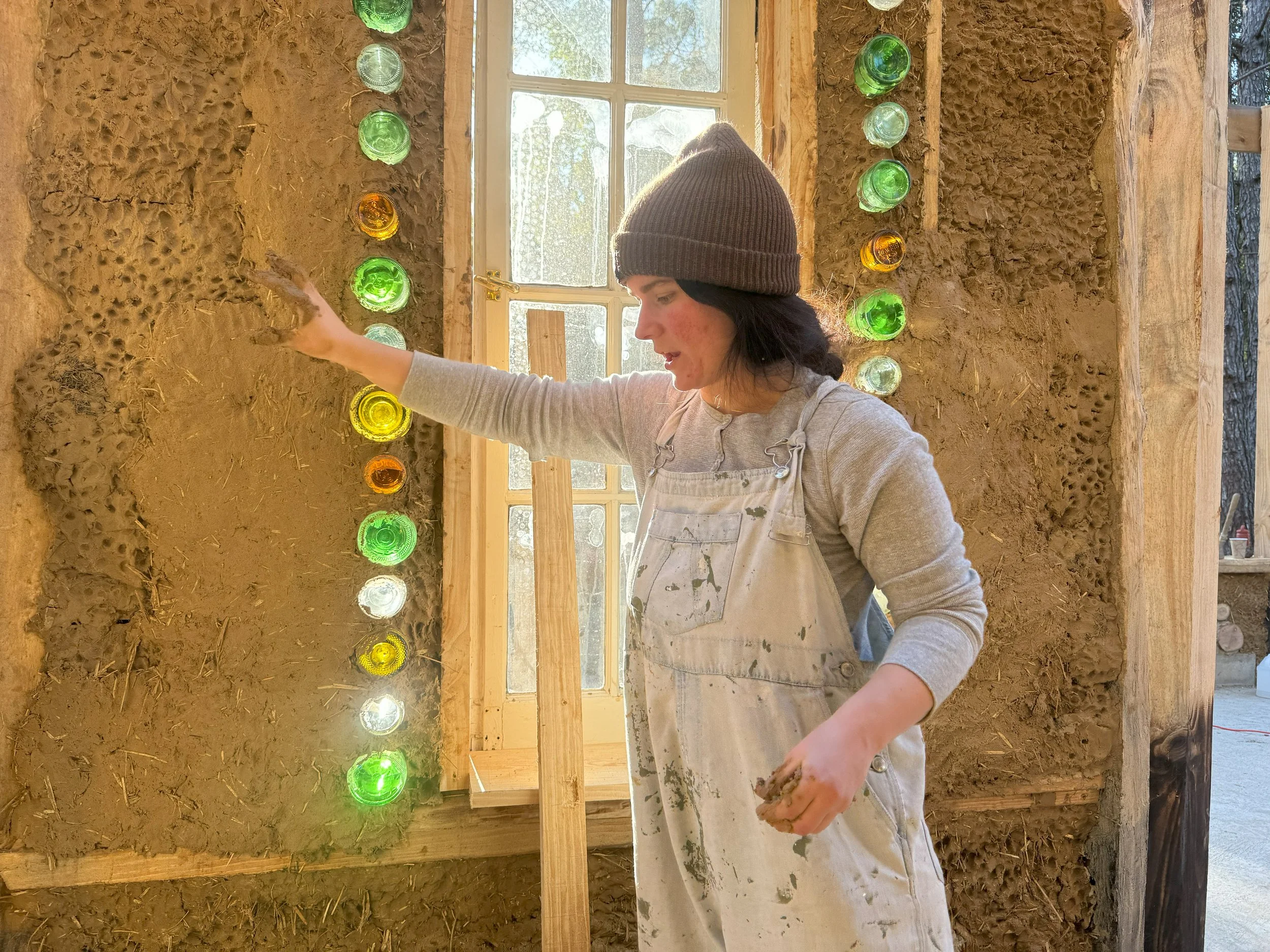Lime & Mineral Plasters
The living skin of a building.
Unlike impermeable cement or synthetic paints, lime and clay plasters allow moisture to pass through walls. This vital breathability prevents trapped moisture, protecting the structural integrity of materials like cob and straw bale. They maintain healthy indoor air quality by passively regulating humidity, creating a living, responsive building envelope.
A Philosophical Core:
Our plasters represent a philosophy of care and closure. We choose materials that heal: both in their function, by protecting a building, and in their essence, by sequestering carbon and remediating industrial waste. This skin is the final layer of a regenerative practice, a testament to beauty that is not just surface deep but is integrated, responsible, and alive.
Mineral Plasters:
A Breathing, Living Skin
Unlike impermeable cement or synthetic paints, lime and clay plasters allow moisture to pass through walls. This vital breathability prevents trapped moisture, protecting the structural integrity of materials like cob and straw bale. They maintain healthy indoor air quality by passively regulating humidity, creating a living, responsive building envelope.The Carbonation Cycle
Lime plaster performs a remarkable act of circular chemistry. After application, it begins re-absorbing carbon dioxide from the atmosphere, gradually converting back to limestone over its lifetime. This process, called carbonation, allows it to heal a significant portion of the carbon debt from its initial production, moving us closer to a closed-loop material cycle.Alchemy of Color and Light
We source mineral pigments and local materials to create finishes that are uniquely tied to place. Our partnership with EPCAMR allows us to transform iron oxides from abandoned mine drainage into beautiful, rich pigments, turning a legacy of extraction into one of creation. Mixed with local sands, clays, and crushed shells, each plaster batch becomes a site specific recipe of color and texture that changes with the light.Inherently Pure and Protective
Lime is naturally antiseptic and resistant to mold and bacteria, creating a healthy, hypoallergenic surface. Both lime and clay plasters are non toxic, safe to touch (once cured!), and require no harmful chemical additives. Their application becomes a human scaled act, often integrated into community workshops where people of all ages can participate in shaping their environment.Repairable and Circular
These materials defy the concept of waste. A crack or chip is not a flaw but an opportunity for care, easily mended with the same material. At the end of a building’s life, the plaster can return to the earth without harm or be salvaged and reused, completing a circular lifecycle.
Our Plaster Practices:
Tadelakt: A traditional Moroccan technique using lime plaster and olive oil soap to create a seamless, waterproof, and tactilely beautiful surface.
Venetian Plaster: Applying layers of lime plaster to create a deep, marble like luminosity and depth.
Earthen Plasters: Blending local clays, sands, and fibers like straw to create warm, breathable, and sculptural interior finishes.
Mineral Pigments: Creating our palette from nature, using everything from local ochres to iron oxide pigments reclaimed from mine drainage in partnership with EPCAMR.


